Fiber optic communication, as one of the key technologies in the modern communication field, has been widely applied on a global scale. With the continuous growth of information transmission demand, traditional fiber optic communication technology has faced a series of challenges, including bandwidth enhancement, data transmission speed increase, and signal quality maintenance. In this context, 25G SFP28 fiber optic communication technology emerged, providing an innovative solution for meeting the communication needs of high speed, large capacity, and low latency.
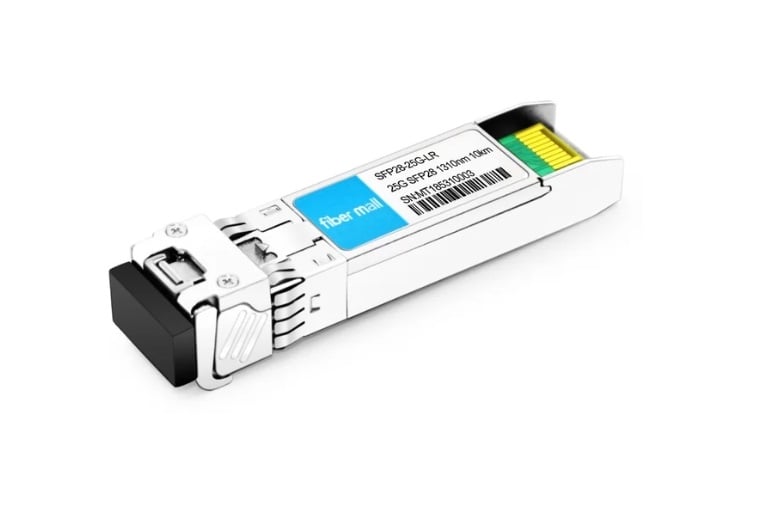
Forward Error Correction Technology
In 25G fiber optic communication, Forward Error Correction (FEC) technology plays a vital role. FEC technology adds redundant information to the transmitted data, to correct errors caused by channel noise, fading, etc. The application of this technology can effectively improve the reliability and stability of the communication system, making the data more secure and reliable during transmission. In the following article, we will explore in depth how FEC technology exerts its key function in 25G fiber optic communication, as well as its specific application scenarios and effects.
Fiber Optic Communication
Fiber optic communication is a communication method that uses light propagation characteristics to transmit information through optical signals in fiber. Its basic principle is to use the high refractive index and total reflection properties of fiber, to make the optical signals transmitted along the fiber while maintaining the stability and quality of the signal. Fiber optic communication has a higher transmission rate and lower signal attenuation than traditional cable communication.
25G fiber optic communication, as a high-speed communication technology, has a larger bandwidth and higher transmission rate than traditional 10G fiber optic communication. This makes 25G fiber optic communication have significant advantages in dealing with big data transmission, high-definition video transmission, cloud service, and other fields. However, the challenges that come along include signal distortion, attenuation, and noise, which need to be solved by advanced technical means.
The development of fiber optic communication has gone through multiple stages. From the earliest optical fiber experiment to the modern fiber optic communication network, each step represents a leap in communication technology. In this process, the constantly improved fiber optic communication technology has promoted the speed and efficiency of information transmission. 25G fiber optic communication is born in this evolutionary process, laying the foundation for the future development of communication technology.
Basic Principles of FEC Technology
Forward error correction (FEC) is a technique that adds redundant information at the sender side so that the receiver can detect and correct errors that occur during data transmission. The basic principle is to introduce redundant bits, which allow the receiver to recover the data even if some errors occur, thus ensuring data integrity. FEC is widely used in the communication field, especially in high-speed data transmission, such as 25G optical fiber communication.
FEC is not only important for optical fiber communication, but also for wireless communication, satellite communication, and other domains. In data communication, the signal may be distorted and corrupted by various interferences during the transmission process. FEC improves the error tolerance of the signal by adding redundant information, thus ensuring reliable data transmission.
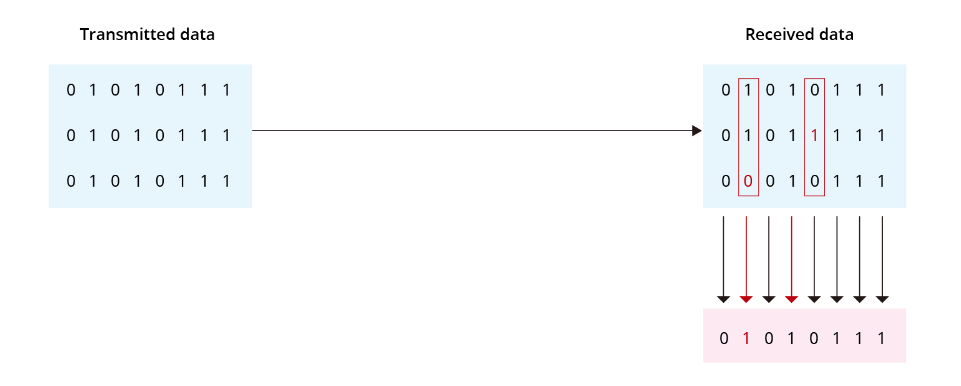
In optical fiber communication, the signal transmission is affected by the characteristics of the fiber itself and the external environment, which may cause distortion and errors. FEC embeds redundant information in the transmitted data, which can resist the noise and attenuation of the optical signal to some extent, thus improving the reliability and performance of 25G optical fiber communication.
The Challenges of 25G Optical Fiber Communication
As communication technology advances, traditional optical fiber communication faces a series of challenges. These include signal distortion, attenuation, coherence degradation, and other issues that directly affect the stability and reliability of communication systems. To address these challenges, advanced technical solutions have emerged, and 25G optical fiber communication is one of them.
Although 25G optical fiber communication has made significant progress in providing higher transmission rates and larger bandwidths, it still faces some challenges. These include signal distortion during transmission, sensitivity to noise, and system complexity. These challenges need to be solved by advanced technical solutions, and FEC technology is one of the key solutions that play an irreplaceable role in improving system performance.
Forward error correction technology is widely used in 25G optical fiber communication to solve the challenges of signal transmission. By adding redundant information to the data, FEC technology can effectively cope with channel noise, optical attenuation, and other problems, and improve the reliability of data transmission. In practical applications, adopting advanced FEC technology is an important means to overcome the challenges faced by 25G optical fiber communication.
The Application of FEC Technology
In 25G optical fiber communication systems, signal transmission reliability is crucial. Since optical signals are easily affected by optical fiber attenuation, distortion, and other external interference during transmission, FEC technology introduces error correction codes, which is one of the key means to improve the system’s noise resistance and signal quality effectively.
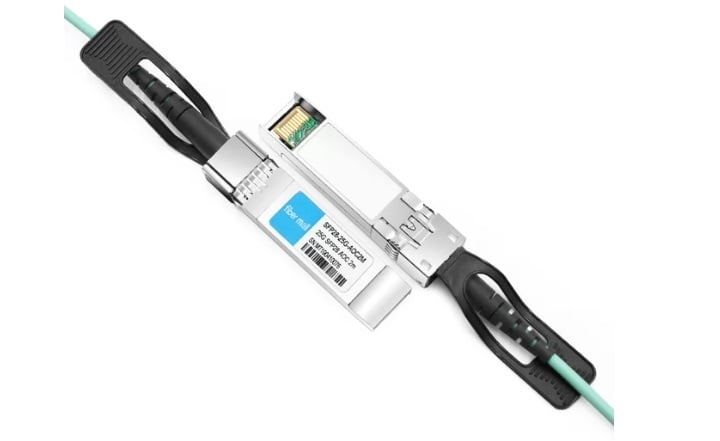
FEC technology has a wide range of applications in various scenarios, such as data centers, communication networks, and so on. For example, in large-scale data transmission scenarios, adopting appropriate FEC coding schemes can significantly reduce the error rate in data transmission, thereby improving the overall performance of the system. In long-distance optical fiber communication, FEC technology can also effectively resist the attenuation of optical signals during transmission, ensuring the stable transmission of signals.
In 25G optical fiber communication, different FEC technologies include Reed-Solomon codes (RS codes), low-density parity-check codes (LDPC codes), etc. These technologies have differences in error correction effects, computational complexity, latency, and so on. The article will compare these FEC technologies in-depth and provide readers with the basis for choosing the suitable FEC technology in different scenarios.
In large-scale data centers, the demand for high-speed, high-capacity, and low-latency communication is extremely urgent. By using 25G optical fiber communication technology and combining FEC technology, data centers can achieve more stable and reliable data transmission. By introducing FEC, errors that may occur during data transmission are effectively corrected, ensuring the integrity of the data, and thus enhancing the performance of the entire data center.
In long-distance communication networks, 25G optical fiber communication technology also faces challenges such as signal attenuation. By using FEC technology, especially some efficient FEC codes suitable for long-distance communication, the distortion of optical signals during transmission can be significantly reduced, ensuring that the signals maintain high quality when transmitting over long distances.
Through the analysis of multiple practical cases, we can summarize the actual performance improvement effects of FEC technology in 25G optical fiber communication. By choosing the appropriate FEC scheme in different scenarios, the challenges in communication systems can be effectively addressed, and the reliability and stability of the systems can be improved. In actual deployment, the accumulation of experience in different industries and environments is crucial for the successful application of FEC technology.
Why do 25G Modules Need FEC?
The main reason why 25G modules need forward error correction (FEC) technology is related to the noise, distortion, and other interference that may be faced during data transmission, as well as the challenge of maintaining data integrity in high-speed optical networks. Please rewrite this in English in a formal way.

Noise and distortion effects: In high-speed transmission at 25Gbps, noise and distortion negatively impact the optical receiver’s accurate decoding ability, which may cause data transmission errors. This effect is more significant in long-distance transmission or high-noise environments.
Data integrity assurance: 25G modules, as the core components of high-speed Ethernet and internal data center interconnection, need to ensure the integrity of data transmission. Even in the face of certain channel noise and distortion, they also need to ensure that the receiving end can accurately decode the transmitted data, avoiding the increase of bit error rate.
FEC technology’s role: FEC technology, by adding redundant information to the transmitted data, enables the receiving end to detect and correct transmission errors. This is crucial for high-speed optical fiber communication at 25Gbps, as it can improve the system’s noise resistance and ensure the reliability of data in the transmission process.
Adapt to higher transmission rates: With the popularity of cloud computing and high-bandwidth applications, the demand for network transmission rates is increasing. 25Gbps, as the foundation of the current high-speed network, can achieve higher transmission rates while maintaining a low bit error rate by using FEC technology.
Reduce the requirements for optical components: Configuring the correct FEC can reduce the extreme performance requirements for optical components, thereby reducing the design complexity and cost. This makes 25G modules more cost-effective and adaptable to different network environments.
Therefore, 25G modules using FEC technology help improve the performance of the entire network system, ensuring the reliability and integrity of data in high-speed transmission. This is essential for meeting modern communication needs and the requirements of future network development.
FEC matching and mismatching play a key role in optical communication systems, especially when using high-speed optical modules (such as 10/25G SFP28 optical modules).
FEC matching scenario
Using the same type of FEC (forward error correction) at both ends of the link helps to ensure the normal operation and reliable transmission of data in the optical communication system. Here are some features of the FEC matching scenario:
Same FEC type devices: All devices, including hosts, switches, and transceivers, use the same type of FEC. For example, both switches use RS-FEC (Reed-Solomon forward error correction).
Smooth communication: Since all devices understand and handle the same type of redundancy and error correction mechanisms, the communication is smooth. This ensures the consistency and reliability of data transmission.
Detection and correction of potential errors: Data transmission is more reliable because potential transmission errors can be detected and corrected by the end-to-end system. The same type of FEC allows devices to process data together, ensuring data integrity.
FEC mismatching scenario
Using different types of FEC at both ends of the link may cause the link function to be incorrect, thereby affecting the performance of the communication system. Here are some potential problems of the FEC mismatching scenario:
Different FEC type devices: The devices at both ends use different types of FEC. For example, one end uses RS-FEC, while the other end uses another type of FEC or does not use FEC.
Unstable communication: Different FEC types may cause unstable communication, because devices may not be able to correctly understand and handle each other’s redundancy and error correction mechanisms.
Potential errors cannot be handled: Due to the FEC mismatch between devices, potential transmission errors may not be detected and corrected by the other device, thus reducing the reliability of data transmission.
The key to solving FEC mismatch problems is to ensure that all devices use the same type of FEC.
Negotiate and configure the same FEC type: Negotiate and configure the same FEC type between devices to ensure that the FEC matches at both ends of the link.
Use devices that support multiple FEC types: Choose transceivers or devices that can support multiple FEC types to provide flexibility and compatibility. For example, some transceivers support sfp-10/25G-CSR (short reach compatibility), which can adapt to different FEC requirements. By taking these measures, FEC mismatch problems can be effectively avoided, ensuring the stability and performance of the optical communication system. It is very important to carefully consider and ensure the consistency of FEC in the system design and configuration process.
Comparison of Different Types of FEC Techniques
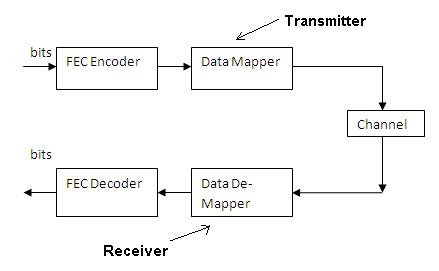
Reed-Solomon codes (RS codes)
Reed-Solomon codes are a classic FEC technique, commonly used for data error correction. Their advantage lies in their simplicity and efficiency, which may be a good choice for some short and not very complex communication links. However, when dealing with high-noise environments or scenarios that require higher error correction performance, RS codes may have relatively weak performance.
Low-density parity-check codes (LDPC codes) Low-density parity-check codes are a high-performance FEC technique, widely used in the communication field. LDPC codes perform well in high-noise environments and are adaptable for high-speed applications such as 25G optical fiber communication. Their main features include low-density check matrices, low computational complexity, and high error correction performance.
Other FEC technique choices
In addition to RS codes and LDPC codes, there are other FEC techniques, such as convolutional codes, Turbo codes, etc. Each technique has its unique advantages and application scenarios. Choosing the appropriate FEC technique depends on the characteristics of the communication link, the performance requirements of the system, and the actual application environment, among other factors.
Future Development Direction
With the joint promotion of 25G fiber optic communication technology and FEC technology, the communication field is ushering in a new development period.
Higher-speed fiber optic communication: As data demand continues to grow, communication systems may move towards a higher-speed development direction, driving the evolution of 25G fiber optic communication technology.
Smarter FEC technology: Future FEC technology may become more intelligent, using machine learning and other technologies to adapt to different communication environments in real-time, providing more flexible and efficient error correction capabilities.
Multi-mode fiber optic communication: By combining multi-mode fiber, seamless switching between different modes can be achieved, further enhancing the flexibility and adaptability of communication systems.
Summary
25G fiber optic communication technology, as a key communication technology, has achieved remarkable performance improvement by introducing FEC technology in the face of the ever-increasing data transmission demand. Various practical application cases demonstrate the flexibility and efficiency of FEC technology in different scenarios. Different types of FEC technology also provide diverse choices to suit different communication environments and requirements.
In the future, with the continuous development of communication technology, we can expect more innovations in 25G fiber optic communication technology and FEC technology. Possible development directions include higher-speed, lower-latency communication technology, smarter error correction mechanisms, and solutions that adapt to diverse communication environments. This will further promote the construction of an information society and meet people’s constant pursuit of efficient and reliable communication.
Related Products:
-
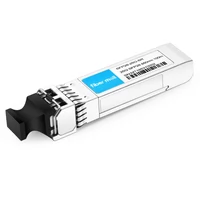 SFP28-25G-SR 25G SFP28 SR 850nm 100m LC MMF DDM Transceiver Module
$25.00
SFP28-25G-SR 25G SFP28 SR 850nm 100m LC MMF DDM Transceiver Module
$25.00
-
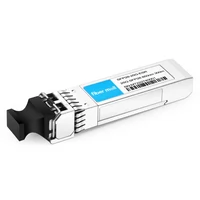 SFP28-25G-ESR 25G SFP28 ESR 850nm OM3 200m/OM4 300m LC MMF DDM Transceiver Module
$35.00
SFP28-25G-ESR 25G SFP28 ESR 850nm OM3 200m/OM4 300m LC MMF DDM Transceiver Module
$35.00
-
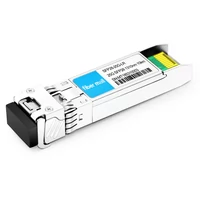 SFP28-25G-LR 25G SFP28 LR 1310nm 10km LC SMF DDM Transceiver Module
$45.00
SFP28-25G-LR 25G SFP28 LR 1310nm 10km LC SMF DDM Transceiver Module
$45.00
-
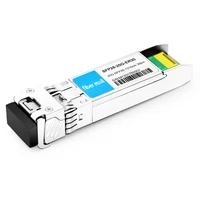 SFP28-25G-ER30 25G SFP28 ER Lite 1310nm 30km LC SMF DDM Transceiver Module
$165.00
SFP28-25G-ER30 25G SFP28 ER Lite 1310nm 30km LC SMF DDM Transceiver Module
$165.00
-
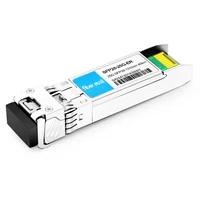 SFP28-25G-ER 25G SFP28 ER 1310nm 40km LC SMF DDM Transceiver Module
$300.00
SFP28-25G-ER 25G SFP28 ER 1310nm 40km LC SMF DDM Transceiver Module
$300.00
-
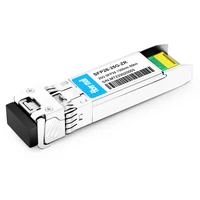 SFP28-25G-ZR 25G SFP28 ZR 1300nm 80km LC SMF DDM Transceiver Module
$1300.00
SFP28-25G-ZR 25G SFP28 ZR 1300nm 80km LC SMF DDM Transceiver Module
$1300.00
-
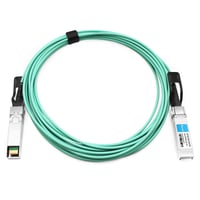 SFP28-25G-AOC3M 3m (10ft) 25G SFP28 to SFP28 Active Optical Cable
$40.00
SFP28-25G-AOC3M 3m (10ft) 25G SFP28 to SFP28 Active Optical Cable
$40.00
-
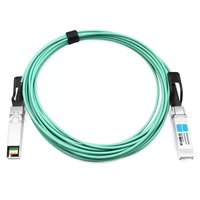 SFP28-25G-AOC5M 5m (16ft) 25G SFP28 to SFP28 Active Optical Cable
$45.00
SFP28-25G-AOC5M 5m (16ft) 25G SFP28 to SFP28 Active Optical Cable
$45.00
-
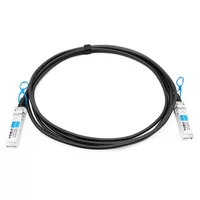 SFP28-25G-PC3M 3m (10ft) 25G SFP28 to SFP28 Passive Direct Attach Copper Cable
$30.00
SFP28-25G-PC3M 3m (10ft) 25G SFP28 to SFP28 Passive Direct Attach Copper Cable
$30.00
-
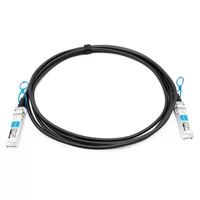 SFP28-25G-PC5M 5m (16ft) 25G SFP28 to SFP28 Passive Direct Attach Copper Cable
$45.00
SFP28-25G-PC5M 5m (16ft) 25G SFP28 to SFP28 Passive Direct Attach Copper Cable
$45.00
